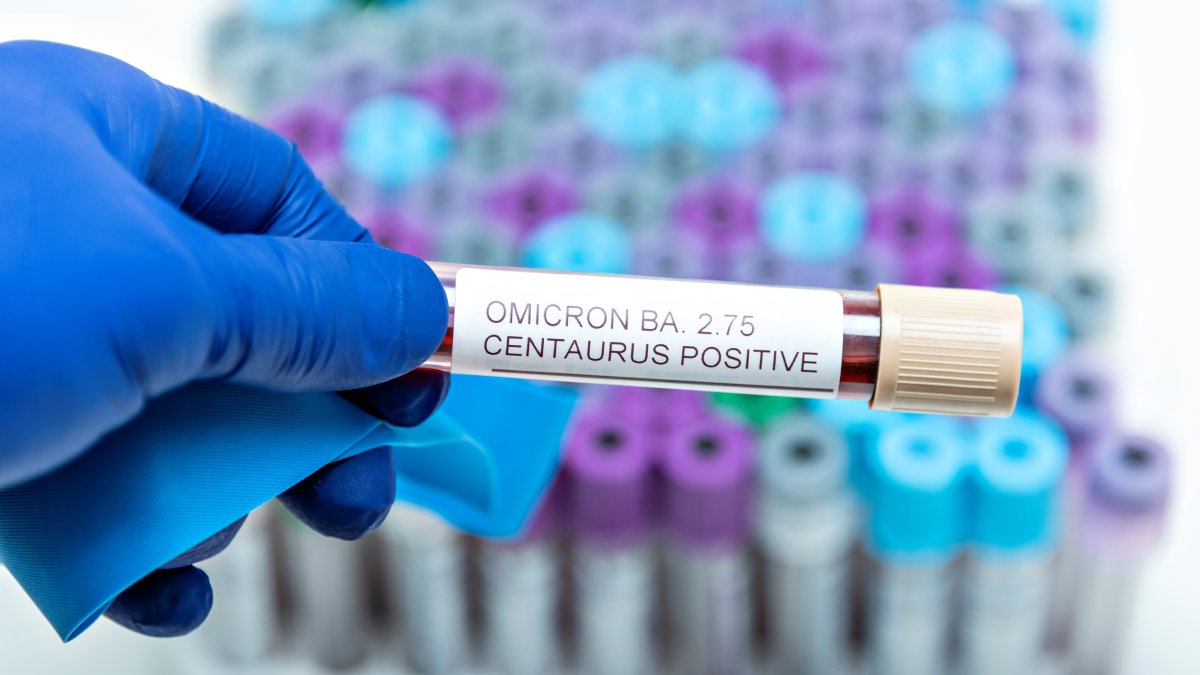With the highly infectious BA.4 and BA.5 subvariants increasing case numbers and hospitalizations, Los Angeles County has moved into the “high” level of COVID-19 activity, which means indoor mask use.
The mandate will be imposed on July 29 in the absence of a major slowdown in virus-related hospital admissions.
As of Thursday, the average daily rate of positive COVID-19 patients hospitalized in the county increased to 10.5 per 100,000 population.
That exceeded the US Centers for Disease Control and Prevention’s threshold for “high” virus activity. The county was previously in the “medium” category.
The county’s public health director, Barbara Ferrer, has warned over the past month that if the county remains in the “high” community level for two consecutive weeks, she will re-impose a mandatory indoor mask mandate.
She reiterated that timeline today, saying that unless hospitalization numbers decline, the masking rule will go into effect on July 29.
The odds of such a reversal appear slim, given the persistent rise in hospitalizations in recent weeks and the continuing upward march of daily COVID-19 infections.
The subvariants are now responsible for 70% of new coronavirus cases, and their immunity to existing vaccines is what worries scientists. This is what you need to know.
While admitting that “it’s never too late to reverse course,” Ferrer added, “it’s hard to imagine that in two weeks the hospitalization data metric will drop.”
He also acknowledged likely public resistance to the idea of mandatory mask wearing and new concerns about who would enforce it.
“Our hope is that people will go ahead and do their best to comply,” Ferrer said, adding that there would be no exemptions for businesses like gyms or yoga studios.
“The spread is super high everywhere. We have lots of outbreaks, so we’re going to ask that everyone go ahead with wearing masks indoors,” Ferrer said.
Masks are already mandatory in some indoor spaces: health care facilities, transit centers, transit vehicles, airports, correctional facilities, and shelters.
A universal mandate would extend the requirement to all indoor public spaces, including shared office spaces, manufacturing facilities, retail stores, indoor events, indoor restaurants and bars, and schools.
If the mask mandate goes into effect on July 29, it will remain in place until the county falls back into the “medium” viral activity category for two weeks, Ferrer said.
PATIENTS WITH COVID-19 IN LOS ANGELES COUNTY
As of Thursday, there were 1,202 positive virus patients in county hospitals, up from 1,170 on Wednesday.
Of those patients, 122 were being treated in intensive care, down slightly from 123 the day before.
The county reported 8,535 new COVID-19 infections on Thursday, a figure likely to be much lower than the actual number of cases as many residents now rely on over-the-counter, often unreported, at-home tests. the results to the county.
The new cases gave the county a running total for the entire pandemic of 3,198,377.
Ferrer said the spike in infections, leading to the eventual rise in hospitalizations and deaths, has been driven by the BA.4 and BA.5 virus variants.
The most recent statistics show that of the county’s COVID-19 cases that underwent specialized testing to identify variants, 48.2% were BA.5s and 14% were BA.4s. That combined rate of 62% is double the rate from two weeks ago.
Health officials said the variants are dramatically more contagious than previous strains, thanks to their ability to infect people who were previously infected with other variants.
Ferrer said he acknowledges that “a lot of people feel like the risk is much lower right now,” but said the threat posed by the BA.4 and BA.5 variants is real.
“We’re saying to worry,” he said. Ferrer also announced 14 more virus-related deaths on Thursday.
This figure brings the total death toll to 32,492. He noted that the county has been seeing a steady rise in COVID-19 deaths, averaging 14 a day for the past week.
Health officials have said most of the deaths occurred in people with at least one underlying health condition, mainly high blood pressure, diabetes and heart disease. But Ferrer stressed that some people die from the virus without any underlying conditions, and there is no way to predict who will be “one of the lucky ones” who escapes an infection without serious health consequences.
The average daily rate of people testing positive for the virus was 17.5% as of Thursday. But Ferrer noted that some health care centers in the county are reporting 40% positivity rates among patients seeking care.
The county’s rate of 10.5 hospitalizations per 100,000 population represents an 88% increase from last month, Ferrer said.
The health official noted that 5.4% of the county’s staffed hospital beds are occupied by COVID-19 patients, an increase of 84% from the previous month.
Orange County and San Diego County also entered the CDC’s “high” viral activity category Thursday, but neither county plans to respond with a mandatory mask mandate or other major public health measures, despite that both have a higher hospitalization rate than Los Angeles County.
According to the CDC, the average daily rate of hospitalizations for COVID-19 in Orange County is 15.2 per 100,000 population, while San Diego County is 11.5 per 100,000.
–


